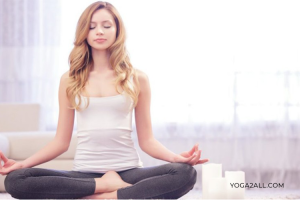
There are certain times that sleep may evade you. It may be due to over activity of your brain. That’s why you keep on tossing and turning in your bed all night long. But, whatever your reasons are when you lack sleep you need to stop this problem. This article will help you know about yoga and sleep.
There are a lot of studies claiming that disturbed sleep patterns can increase the risk of the development of such serious diseases as diabetes and hypertension. Also, it can even cause depression, impaired memory, and judgment, as well as other cognitive problems, if you are suffering anyone of it, you can try yoga and keep reading the article on yoga and sleep.
Luckily, all you need is to either purchase a memory foam pillow practice some practical yoga tips you can follow every night. That way, you can let yourself fall asleep and remain asleep for hours.

Does Yoga Help You Fall Asleep? – Yoga and Sleep
Yoga, mindfulness, and meditation are just some of the best therapies that help induce sleep. In fact, almost 55 percent of people who perform yoga find it helpful to sleep better. Yoga and meditation can relax your busy mind and remove negative energies. Yoga is both calming and energizing. When you combine the two, it will help you obtain a sense of relaxation and balance. Also, it is an effective treatment for insomnia.
5 Tips to Use Yoga for Better Sleep – Yoga and Sleep
Here are some Yoga tips and tricks to follow for your falling asleep:
– Begin with Self-compassion
A regular basis of yoga is becoming compassionate and gentle to your mind and body. When you cling to negative thoughts, you will feel more awful. So, you need to set self-compassion when you perform yoga and let go of your worries.
– Observe Your Breathing
One of the most critical things is to seek for a comfortable place and lie down on your back. Then, start closing your eyes. Put a hand on your abdomen and the other one on your chest. Begin to take slow, smooth breaths. Take the air through your nose gently. Exhale the air through your nose, but keep your mouth shut. Lastly, pace your breathing and let go of your stress and worries.

– Release Stress and Tension with Lion’s Breath
The first thing to do is to breathe the air in your nose. Then, try sticking out your tough and breathe out through your mouth loudly. Do this as if you are fogging your mirror.
– Relaxing While Using Your Forward Folds
Prevent using your hands when you pull yourself forward or when you force your form. Remember that it is not just about your head or hands reaching the floor. Instead, you need to allow your gravity to make most of the effort.
Next, you need to execute the standing forward bend. For arm variations, put your hands on your opposite elbows. You may hold your fingers at the tip of your head. Then, you should bend your knees as much as possible to rest your torso on your thighs.
You may also try the revolved head to knee pose of cobbler pose, certainly, these two yoga are great yoga and sleep. To execute this pose, you should not tug or pull your hands. For a more balanced posture, you need to put your elbow of your lower arm along with your thigh or onto the ground. You have to turn your lower arm. That way, you will prop your head up along with your hand.

You should place the top of your arm along the top of your head for a slow side stretch. Then, allow your arm to dangle rather than rest on your foot. Again, let the gravity do its work. Repeat to the other side of your body.
– Consider a Gentle Inversion
You may try placing your legs up a wall. To do this form, you need to take a seat facing the wall. Allow a gap from your buttocks and the wall around 6 inches. Then, lie back and lengthen your legs up the wall. If you find it not intense enough, you may try sliding your buttocks farther away.
If it is not still working for you, then scoot closer. Rest your arms on your sides. Your palms should be facing upward. Then, you should be breathing slowly. Feel the stretch in the back of your legs.
Conclusion
Not everyone may enjoy yoga. In fact, some people may find it too difficult to execute while others lose focus in meditating and relaxing. Even if it may feel frustrating at times, you should continue doing it if you want to improve your sleep pattern.
When you do this consistently, then you may find it rewarding. What you have to do is to follow the tips indicated above and find poses that work for you. Keep in mind that yoga and sleep will help change your life completely, especially if your goal is to have a good night sleep.
Author’s bio:
This is Sandra McElroy. My mission is to help BedtimeFriends readers research, & pick mattresses, pillows & various other sleep products that suit their needs, & budget.








